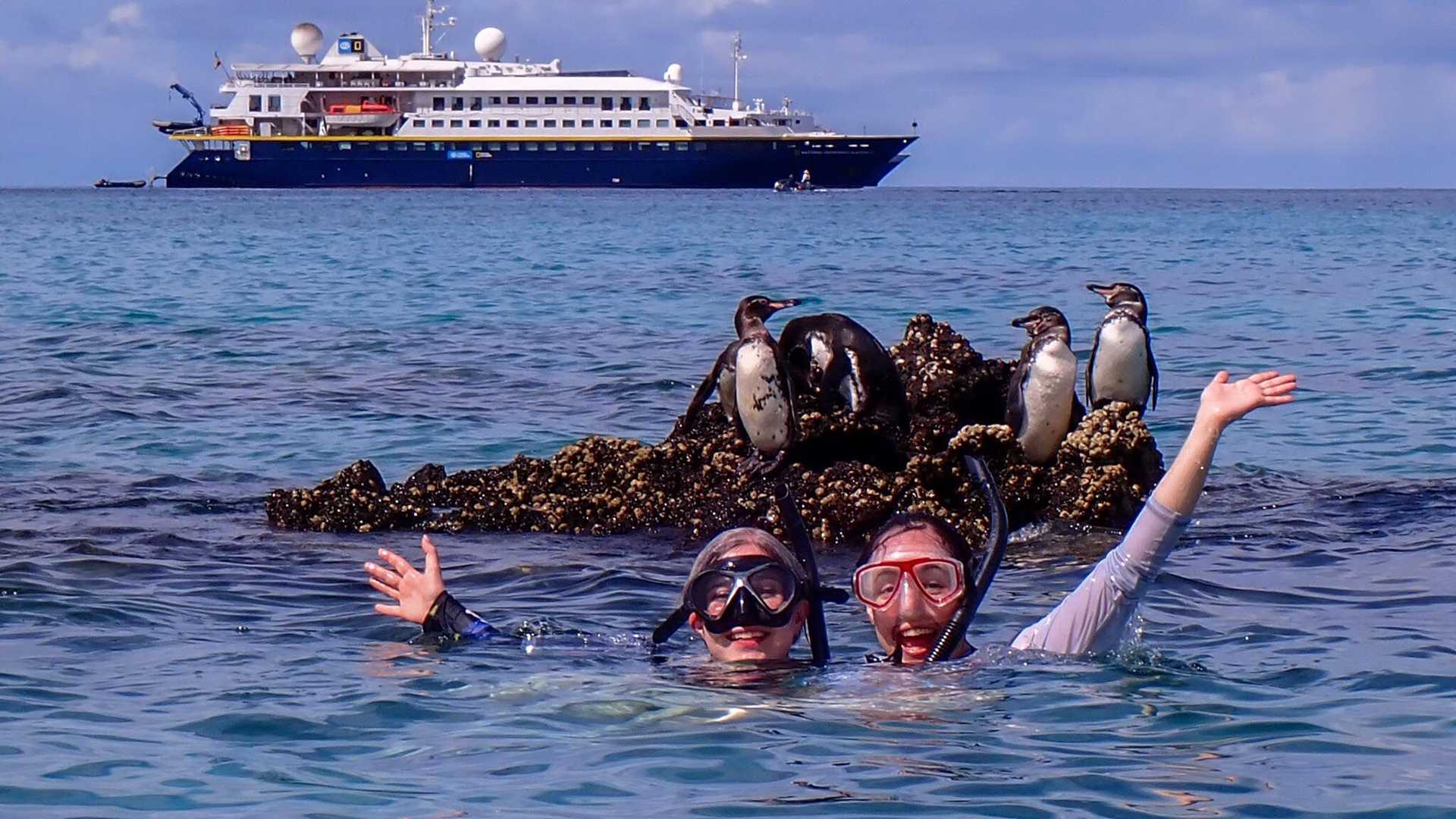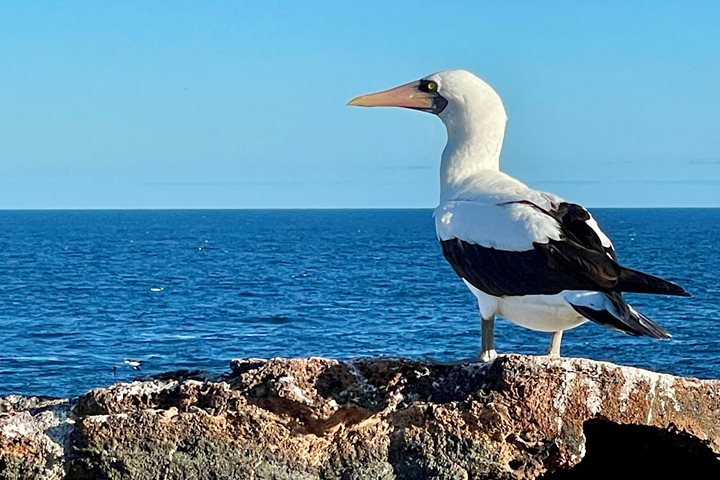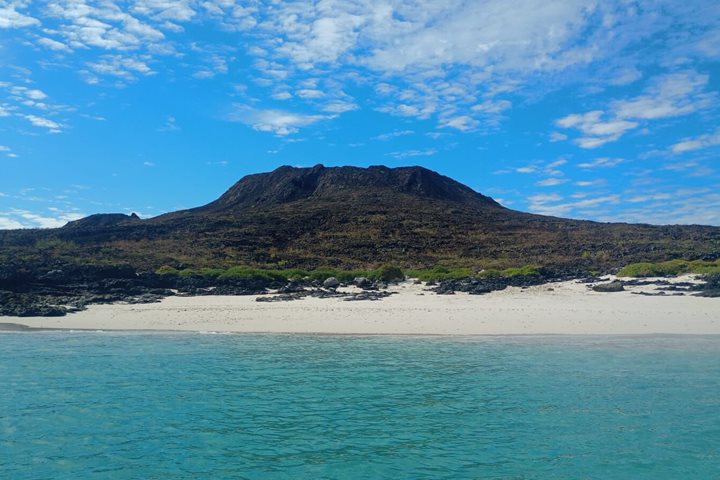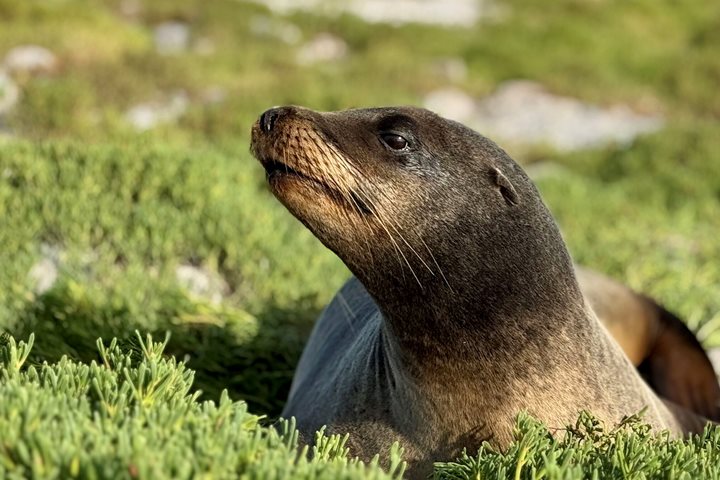Today we explored the northcentral part of the archipelago, and we visited two amazing sites located around Santiago Island.
In the early morning, we visited Chinese Hat, a young crater islet surrounded by turquoise water where we kayaked and snorkeled in search of beautiful tropical fish and Galápagos penguins.
In the afternoon, we visited an area in front of Bartolome Island from where a famous geological formation can be seen, Pinnacle Rock.
At Sullivan Bay we had a close encounter with the Galápagos penguins who were posing for our cameras and displaying on the rocks by the beach. Afterwards we had an extraordinary hike on a vast lava field where the pahoehoe flows make an incredibly texturized landscape. On this hike we witnessed the very beginning of the establishment of life.
We ended the day with a visit to the nesting site of the Galapagos penguins.







